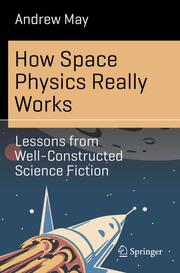-
Zusatztext
-
There is a huge gulf between the real physics of space travel and the way it is commonly portrayed in movies and TV shows. Thats not because space physics is difficult or obscure - most of the details were understood by the end of the 18th century - but because it can often be bafflingly counter-intuitive for a general audience. The purpose of this book isnt to criticize or debunk popular sci-fi depictions, which can be very entertaining, but to focus on how space physics really works. This is done with the aid of numerous practical illustrations taken from the works of serious science fiction authors - from Jules Verne and Arthur C. Clarke to Larry Niven and Andy Weir - who have taken positive pleasure in getting their scientific facts right.
-
-
Kurztext
-
Focuses on basic physics, mainly high-school arguments, in science fictionAnalyses works of Jules Verne, Arthur C. Clarke, Larry Niven and Andy WeirDiscusses exiting and entertaining findings in the context of space travel
-
-
Autorenportrait
- Andrew May obtained a PhD in Astrophysics from the University of Manchester and is an experienced and versatile professional, with a career spanning academia, government and private industry. Since 2011 he has been working as a freelance writer. He has a wide range of interests and has written both authoritatively and entertainingly on the physical sciences, military technology, British history, science fiction, New Age beliefs and the paranormal. He has published with Springer: Pseudoscience and Science Fiction (2017), The Telescopic Tourist's Guide to the Moon (2017), Rockets and Ray Guns: The Sci-Fi Science of the Cold War (2018), Fake Physics: Spoofs, Hoaxes and Fictitious Science (2019) and The Science of Sci-Fi Music (2022).
Detailansicht
How Space Physics Really Works
Lessons from Well-Constructed Science Fiction, Science and Fiction
ISBN/EAN: 9783031339493
Umbreit-Nr.: 9267867
Sprache:
Englisch
Umfang: vi, 151 S., 12 s/w Illustr., 32 farbige Illustr.,
Format in cm:
Einband:
kartoniertes Buch
Erschienen am 29.06.2023
Auflage: 1/2023


